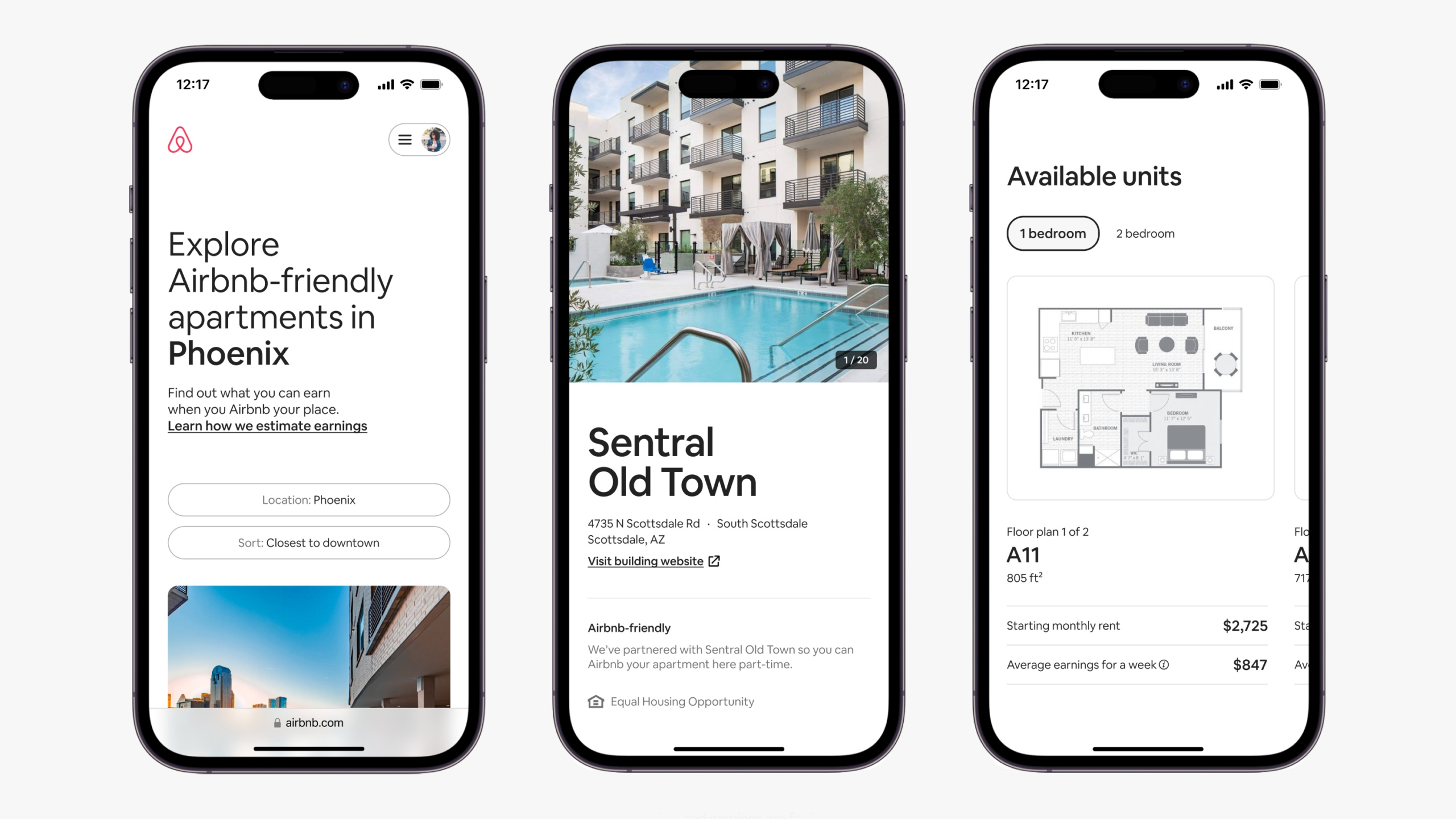|
Getting your Trinity Audio player ready...
|
Have you ever wondered how some brands manage to capture your attention and create a lasting impression? It’s all about brand storytelling. But what exactly is brand storytelling and why is it so important in today’s competitive market?
In today’s digital age, consumers are bombarded with countless advertisements and marketing messages daily. As a result, it has become increasingly challenging for brands to stand out and connect with their target audience. This is where brand storytelling comes in.
Brand storytelling is the art of using narratives to communicate a brand’s values, mission, and purpose in a way that resonates with consumers on an emotional level. It goes beyond simply promoting products or services and instead focuses on creating a meaningful and authentic connection with the audience.
In this article, we will explore the power of brand storytelling and how it can help businesses build a loyal customer base and differentiate themselves from competitors.
Brand Storytelling
Brand storytelling is the process of creating a series of plot points to build an emotional connection between a brand and its target audience.
What Is Brand Storytelling?
At the heart of effective brand communication lies the art of brand storytelling. It’s about crafting narratives that breathe life into your brand, imbuing it with emotions, values, and purpose that resonate with your audience. Brand storytelling transforms your brand from being a faceless entity into a relatable and memorable presence.
Brand storytelling is the strategic approach of conveying your brand’s identity, values, and purpose through compelling tales that evoke emotions and create lasting connections.
Think of it as building a bridge between your brand and your audience. Through well-crafted stories, you’re able to transport your customers into the heart of your brand, giving them a glimpse of its values and the people behind it.
You’re able to foster a sense of relatability, turning casual consumers into brand advocates who feel invested in your narrative.
In essence, brand storytelling is your brand’s voice – a voice that is authentic, compelling, and capable of leaving a lasting impact. It’s the art of leveraging narrative techniques to communicate the heart and soul of your brand, creating a meaningful connection that transcends traditional marketing approaches.
The Art of Crafting Compelling Narratives
To master brand storytelling, one must delve into the art of crafting compelling narratives that captivate and resonate with the audience. Effective brand narratives are like a well-composed symphony – they have distinct components that harmonize to create a memorable and impactful experience.
Identifying the Core Components of Effective Stories
Effective brand narratives have several key components that work together to create a cohesive and engaging story:
1. Protagonist: Every story needs a protagonist, and in brand storytelling, your brand takes on that role. Your brand becomes the central character with its attributes, values, and goals.
2. Conflict: Just like any story worth telling, there should be a challenge or conflict that the protagonist faces. This could be a problem your customers are experiencing or a broader issue your brand aims to solve.
3. Resolution: A satisfying resolution is essential. This is where your brand’s solution comes into play, showing how it can overcome challenges and provide a positive outcome.
4. Emotional Connection: The power of storytelling lies in emotions. Craft narratives that evoke emotions, whether it’s empathy, inspiration, nostalgia, or joy. Emotional resonance is what makes stories memorable.
5. Authenticity: Authenticity is the cornerstone of successful brand storytelling. Be true to your brand’s identity and values. Authentic stories resonate more deeply with audiences, building trust and credibility.
The Role of Emotion and Connection in Brand Narratives
Emotion is the secret ingredient that elevates brand narratives from ordinary to extraordinary. Our brains are wired to respond to emotional content, making it more likely to be remembered and shared.
When you tap into emotions, you’re creating a bond between your brand and the audience.
Consider the story of a small local bakery that shares the tale of its founder’s lifelong passion for baking passed down through generations. This narrative not only showcases the authenticity of the brand but also elicits emotions of nostalgia, warmth, and comfort.
As a result, customers don’t just buy pastries; they become a part of the bakery’s story.
Emotional connections foster a sense of loyalty and advocacy. When customers feel connected to your brand’s story, they’re more likely to become devoted supporters and share their experiences with others. This organic word-of-mouth promotion can be a powerful driver of brand growth.
Why Brand Storytelling Matters
In a world flooded with information and choices, brand storytelling acts as a guiding light that leads customers to your doorstep. It’s not just a tool for marketing; it’s a fundamental way to establish a connection and leave a lasting impact.
Here’s why brand storytelling matters more than ever:
Building Emotional Connections with Customers
In an era where consumers have become more discerning, traditional advertising alone falls short. Enter brand storytelling – a compelling approach that goes beyond mere product features and pricing. Through storytelling, brands can forge emotional connections that resonate on a human level.
When a brand shares its journey, values, and experiences, it becomes relatable. Consumers are drawn to narratives that mirror their own lives or aspirations. Emotional connections foster trust and loyalty, turning customers into brand advocates who not only buy from you but also champion your brand among their circles.
Differentiating Your Brand in a Competitive Landscape
Competition is fierce across industries, and standing out requires more than a unique product or service. It demands a unique narrative. Brand storytelling gives your brand a distinct voice and personality that sets it apart from the noise.
Consider the beverage industry, saturated with options. Yet, brands like Coca-Cola have thrived not just due to their beverages but also due to the narratives they’ve woven around themes of happiness, togetherness, and nostalgia.

When your narrative resonates deeply with your audience, you’re not just another option; you become the preferred choice.
In essence, brand storytelling serves as your brand’s differentiator in a crowded marketplace. It’s a powerful tool that can elevate your brand from being a commodity to being a cherished part of your customers’ lives.
The Psychological Impact of Stories on Consumers
Have you ever wondered why you remember stories from your childhood but forget product advertisements you saw last week? The answer lies in the psychology of storytelling.
Our brains are hardwired to respond to narratives, making them an effective means of communication and persuasion.
How Stories Engage and Influence Our Brains
When we hear a story, our brains light up. Neuroscientists have discovered that storytelling activates multiple areas of the brain, including those responsible for processing sensory experiences and emotions.
This engagement creates a richer and more immersive experience, making it more likely for the information to be remembered.
Stories stimulate the release of oxytocin, often referred to as the “love hormone.” This hormone enhances empathy, trust, and connection – all essential elements in building a strong relationship between your brand and your audience.
The Science Behind Why People Remember Stories
Ever experienced the phenomenon where you recall a story vividly but struggle to remember dry facts? This is because stories engage different parts of the brain, making the information more memorable.
Research by cognitive psychologist Jerome Bruner suggests that people are 22 times more likely to remember information presented in a story format compared to facts presented straightforwardly. This is a testament to the power of narratives in influencing long-term memory retention.
Harnessing this psychological impact, brand storytelling becomes a strategic tool for ensuring your brand remains etched in the minds of your customers. By crafting compelling narratives, you’re not just conveying information; you’re creating a memory that lingers and influences decisions.
Key Elements of a Successful Brand Story
Defining the Brand’s Purpose and Values
At the heart of every impactful brand story lies a clear sense of purpose and a set of values that define what the brand stands for. Your brand’s purpose transcends the products or services you offer; it represents the larger mission you aim to fulfill in the lives of your customers.
Consider TOMS Shoes, known for its “One for One” initiative – for every pair of shoes sold, a pair is donated to a child in need. This purpose-driven approach not only guides TOMS’ business decisions but also becomes the cornerstone of its brand story.
Your brand’s purpose becomes the North Star that guides the narratives you craft.
Creating Relatable Characters and Scenarios
Just as a gripping novel introduces characters with whom readers can relate, your brand story should introduce relatable characters and scenarios that resonate with your audience. These characters can be customers, employees, or even the brand itself personified.
The relatability of characters helps bridge the gap between your brand and your customers. When your audience sees themselves in your narratives, they become more emotionally invested, leading to a deeper connection.
These relatable characters become vessels through which your audience experiences your brand’s journey.
Aligning Brand Storytelling with Business Goals
Integrating Storytelling into Brand Strategy
The power of brand storytelling is most evident when it seamlessly aligns with your overall brand strategy. While storytelling is a compelling tool in itself, it becomes exponentially more effective when integrated into your larger business objectives.
As you develop your brand strategy, consider how storytelling can amplify your goals. Are you looking to increase brand awareness?
Craft narratives that introduce your brand’s purpose and values, making it relatable to a wider audience. Seeking to drive customer loyalty? Share stories that highlight your brand’s commitment to customers, showcasing real-life experiences.
For example, take Nike’s “Just Do It” slogan and its accompanying campaigns. Through this succinct yet powerful phrase, Nike has woven a compelling narrative of empowerment, determination, and action.

This message not only resonates with athletes and fitness enthusiasts but also encapsulates a broader ethos of pursuing one’s dreams and breaking through barriers. The campaign’s success isn’t just in driving sales; it’s in creating a narrative that inspires individuals to embrace challenges and seize opportunities, aligning perfectly with Nike’s mission of igniting greatness in everyone.
Using Stories to Drive Specific Marketing Objectives
Each piece of your brand story has a role to play in achieving specific marketing objectives. Whether it’s increasing website traffic, driving conversions, or launching a new product, your narratives can be tailored to meet these goals.
For instance, if you’re launching a new product, weave a story that revolves around the problem your product solves and the journey it took to create it. This narrative can be shared through various channels, creating anticipation and excitement among your audience.
Consider Dove’s “Real Beauty” campaign, which aimed to change perceptions of beauty. By sharing stories of real women and celebrating their natural beauty, Dove not only conveyed a powerful message but also drove a significant increase in sales and brand loyalty.
Aligning storytelling with business goals requires a strategic approach. Each narrative should be crafted with a specific purpose in mind, whether it’s increasing engagement on social media, boosting sales during a specific period, or generating leads for a new service.
When your brand story and business goals are in sync, storytelling becomes a transformative force that propels your brand forward. It becomes a vehicle for driving specific outcomes while fostering authentic connections with your audience.
This integration ensures that storytelling isn’t just a standalone tactic but a strategic tool that contributes to your brand’s growth and success.
Building Brand Identity Through Storytelling
Infusing Brand Voice and Tone in Narratives
Your brand’s voice and tone are the unique brand elements that give your brand personality and character. When crafting brand narratives, it’s essential to ensure that your brand’s voice shines through, creating a consistent and recognizable identity.
Consider the tone you use in your interactions with customers—whether it’s friendly, professional, humorous, or authoritative. This tone should be reflected in your brand stories as well, ensuring a seamless experience for your audience.
For instance, if your brand is known for its witty customer interactions, incorporating the same light-hearted tone in your stories can help solidify your brand’s personality. On the other hand, if your brand is all about professionalism and expertise, your narratives should mirror that tone.
Leveraging Stories to Showcase Unique Selling Points
Every brand has unique selling points (USPs) that set them apart from the competition. Brand storytelling provides an excellent opportunity to highlight these USPs engagingly and memorably.
When creating narratives, focus on the aspects of your brand that make you stand out. It could be your commitment to sustainability, your innovative approach to problem-solving, or your exceptional customer service.
For example, if you’re a tech company known for creating user-friendly products, weave stories that showcase real-life scenarios where your products have simplified tasks for your customers. These narratives will not only emphasize your USP but also resonate with your target audience, making your brand more relatable.
By infusing your brand’s voice and tone while showcasing your unique selling points, you build a brand identity that resonates with your audience on a deeper level. These narratives create a lasting impression, reinforcing your brand’s personality and value proposition.
Using Different Channels for Storytelling
Incorporating Stories into Social Media
Social media platforms provide a dynamic and accessible space for brand storytelling. The bite-sized nature of social media content encourages concise yet impactful narratives that capture the attention of your audience.
Consider using platforms like Instagram, Facebook, and Twitter to share short stories, anecdotes, and behind-the-scenes glimpses of your brand. Visual elements such as images and videos can amplify the emotional impact of your stories.
For instance, you can create a series of Instagram Stories that showcase the journey of a product from conception to final production. This not only provides insights into your brand’s process but also engages your audience with an immersive narrative.

Source: Canva
The Power of Storytelling in Video Marketing
Video is a particularly potent medium for brand storytelling due to its visual and auditory appeal. Videos allow you to convey emotions, showcase scenarios, and immerse your audience in your brand’s world.
With the right video editor tool, you can create different types of videos, such as brand documentaries, customer testimonials, or animated narratives. Each video format presents a unique opportunity to convey your brand story effectively.
Consider producing a brand documentary that chronicles the evolution of your company, its values, and its impact. Such documentaries provide a holistic view of your brand’s journey, allowing your audience to connect with your story on a personal level.
Creating Engaging Blog Posts and Articles
Long-form content, such as blog posts and articles, offers a platform for more in-depth storytelling. Here, you have the space to delve into the finer details of your brand’s history, values, and impact.
Craft blog posts that explore specific aspects of your brand story. You can share stories of challenges you’ve overcome, milestones you’ve achieved, and lessons you’ve learned. These narratives provide valuable insights to your audience while establishing your brand’s authority and expertise.
For instance, a blog post could narrate how your brand navigated a significant industry disruption and emerged stronger. By sharing your strategies and experiences, you not only convey your brand’s resilience but also offer valuable lessons to your readers.
Using various channels for storytelling ensures that your brand narratives reach a diverse audience. Each channel offers a unique way to engage and resonate with your audience, helping you create a more comprehensive brand story.
Real-World Examples of Brand Storytelling
Airbnb: Connecting People through Shared Experiences
Airbnb is a prime example of a brand that has effectively harnessed the power of storytelling. By focusing on the stories of its hosts and guests, Airbnb has created a platform that goes beyond accommodation.

Each listing is a chapter in a larger narrative of travel, exploration, and human connection.
Hosts share personal stories about their homes, neighborhoods, and the unique experiences they offer. Guests share their journeys, discoveries, and the memories they’ve made. Through these stories, Airbnb portrays itself as a facilitator of meaningful experiences and connections.
Patagonia: Building a Community Around Shared Values
Outdoor clothing brand Patagonia has built its brand around a strong sense of purpose and shared values. The company’s commitment to environmental sustainability and activism is woven into every aspect of its brand narrative.

Patagonia uses storytelling to amplify its mission. The brand shares stories of environmental initiatives, partnerships, and the impact it has made. This not only resonates with environmentally conscious consumers but also establishes Patagonia as a brand with a genuine and impactful purpose.
Apple: Crafting a Mythos around Innovation
Apple’s brand story is synonymous with innovation and disruption. From its early days in a garage to its iconic product launches, Apple has crafted a mythos around its journey of pushing boundaries and challenging the status quo.

Apple’s storytelling strategy extends to its advertising campaigns. Through emotional and visually striking advertisements, Apple tells stories that evoke curiosity, creativity and the desire for innovation. These narratives evoke powerful emotions that resonate with audiences worldwide.
These real-world examples showcase the diverse ways in which brand storytelling can be effectively used. Whether it’s fostering connections, aligning with values, or creating a mythos, brand storytelling has the potential to elevate brands beyond their products and services, creating lasting impressions in the minds of consumers.
The Role of Storytelling in Brand Loyalty
Creating Lasting Relationships with Customers
One of the most valuable outcomes of effective brand storytelling is the creation of lasting relationships with customers. When consumers connect with a brand’s narrative, they feel a sense of loyalty and emotional attachment.
This connection goes beyond transactional interactions, resulting in repeat business and advocacy.
Customers who relate to a brand’s story are more likely to become repeat buyers and engage in long-term relationships. They become brand advocates who willingly share their positive experiences with others.
This word-of-mouth promotion, fueled by emotional connections, can significantly impact a brand’s reputation and growth.
How Stories Encourage Repeat Business and Advocacy
Storytelling is a tool for encouraging repeat business and advocacy through engagement and emotional resonance. When a brand consistently delivers on the promises and values conveyed in its stories, customers are more likely to remain loyal.
They see the brand as a trusted partner that aligns with their beliefs and preferences.
Moreover, emotionally engaged customers tend to be more forgiving of occasional shortcomings and more willing to support the brand’s growth. By prioritizing storytelling that fosters emotional connections, brands can cultivate a loyal customer base that supports their success over the long term.
Incorporating brand storytelling into a comprehensive strategy can not only boost brand loyalty but also turn customers into active advocates who champion the brand to their networks. This powerful cycle of emotional connection, repeat business, and advocacy is a testament to the profound impact of storytelling on brand-customer relationships.
Measuring the Impact of Brand Storytelling
Identifying Metrics to Gauge Storytelling Success
As with any marketing strategy, measuring the impact of brand storytelling is essential to determine its effectiveness and make informed decisions. While the impact of storytelling is often more qualitative than quantitative, several key metrics can provide valuable insights into its success.
- Engagement Metrics: Tracking metrics such as likes, shares, comments, and social media interactions can gauge the level of audience engagement with your brand’s stories. Higher engagement indicates that your stories are resonating with your audience and sparking conversations.
- Website Traffic and Conversions: Analyzing website traffic and conversion rates from specific storytelling campaigns or content pieces can indicate the impact on lead generation and sales. Increased website traffic and conversions show that your stories are driving tangible results.
- Brand Mentions and Sentiment: Monitoring brand mentions and sentiment across social media platforms and online discussions can help assess how your stories are influencing public perception. Positive sentiment and increased brand mentions suggest that your stories are making a positive impact.
- Customer Behavior: Analyzing customer behavior, such as repeat purchases, time spent on the website, and referral rates, can provide insights into the long-term effects of brand storytelling on customer loyalty and advocacy.
- Story Reach and Impressions: Tracking the reach and impressions of your brand stories across various channels can indicate how far your narratives are spreading and how many people they are reaching.
Analyzing Engagement, Conversions, and Brand Perception
While metrics provide valuable data, the true power of brand storytelling lies in its ability to foster emotional connections and influence consumer behavior. Analyzing engagement metrics and conversions is essential, but it’s equally important to assess how storytelling impacts brand perception.
Positive brand perception includes factors such as increased trust, improved brand awareness, and enhanced customer loyalty. Monitoring changes in these areas can provide a more comprehensive understanding of the impact of your brand’s stories on your audience.
Through a combination of quantitative metrics and qualitative insights, you can gain a holistic view of how brand storytelling contributes to your overall branding strategy. This data-driven approach allows you to refine your storytelling efforts and make strategic decisions that align with your business goals.
The Future of Brand Storytelling
Trends in Storytelling for Evolving Audiences
Brand storytelling is not a static concept; it continues to evolve alongside consumer preferences and technological advancements. As audiences become more digitally savvy and selective about the content they consume, brands must adapt their storytelling strategies to remain relevant.
- Interactive and Immersive Content: Interactive storytelling experiences, augmented reality (AR), and virtual reality (VR) are gaining traction, providing audiences with immersive ways to engage with brand narratives.
- User-Generated Content: Brands are increasingly incorporating user-generated content into their narratives, allowing customers to become part of the story and fostering a sense of community.
- Micro-Moments: Brands are focusing on creating bite-sized, impactful stories that cater to consumers’ short attention spans and desire for instant gratification.
Embracing Emerging Technologies for Immersive Narratives
The integration of technology into storytelling is reshaping how brands engage with their audience. Emerging technologies like AR, VR, and interactive videos offer opportunities for creating immersive experiences that captivate and involve consumers on a deeper level.
AR and VR technologies, for instance, enable brands to transport consumers into virtual worlds where they can experience stories firsthand. Interactive videos allow viewers to make choices that influence the story’s outcome, enhancing engagement and personalization.
The future of brand storytelling lies in embracing these technologies to create memorable and dynamic narratives that resonate with the modern consumer’s desire for unique and immersive experiences.
Tell Your Story
In a rapidly evolving business landscape, where competition is fierce and consumer attention is fleeting, brand storytelling stands out as a powerful tool for connecting with audiences on a profound level. It goes beyond traditional marketing tactics, tapping into the human need for meaningful connections and emotional resonance.
The journey from ancient tales around the campfire to modern digital narratives has shown that storytelling is an enduring art form that transcends time and culture. As a business professional, you have the opportunity to harness the power of brand storytelling to elevate your brand, foster authentic connections, and inspire meaningful action.
As you navigate the intricacies of brand storytelling, remember that every brand has a unique story waiting to be told. By defining your brand’s essence, crafting compelling narratives, and aligning them with your business goals, you can create a brand identity that leaves a lasting impact on your audience.
Unlock the true potential of your brand through the art of storytelling. At The Brand Shop, we specialize in crafting narratives that resonate, connect, and leave a lasting impression. Our team of experts is ready to collaborate with you to create a brand story that captures the essence of your business and engages your audience on a profound level.
Contact us today to discover how our expertise in brand storytelling can drive your business forward and create meaningful connections with your audience. Your brand’s story is waiting to be told – let’s make it unforgettable together.
